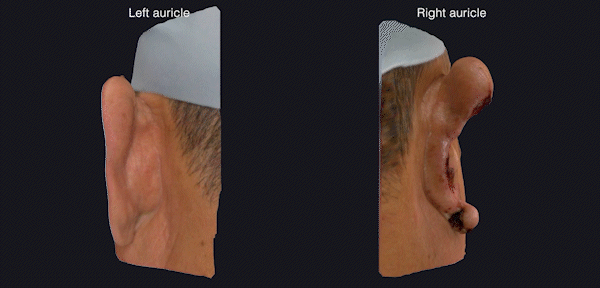Forensic pathologists help law enforcement organizations and courts collect and examine evidence for criminal cases. However, a recent study published in the Chinese Journal of Forensic Medicine by HongBing Pang et al. reveals that the traditional forensic method of identifying injuries may be inaccurate and potentially influence sentence.
Traditionally, forensic pathologists have basically relied on conventional tools such as some soft rulers to take measurements. However, as highlighted by the study, measurement errors are significant when measuring body surface injuries with curvature due to the difficulty of measurement or subjective factors of the measurer. These parameters are of such great value that they can determine whether the criminal justice system ultimately prosecutes the innocent and proves the culpability of the offender.
Table of Contents
3D Scanning Solution
Therefore, the aim of the study by HongBing Pang et al. was to combine the traditional forensic methods with 3D measurements. In their practice, the researchers chose the EinScan Pro 2X 2020 multifunctional handheld 3D scanner to scan the injured parts of the body surface. In handheld fine scanning mode, the EinScan Pro 2X 2020 can achieve an accuracy of 0.05 mm. Together with the powerful scan stitching function and texture alignment algorithm, high quality color 3D data information of the injured area can be obtained quickly.

Subsequently, the data from the 3D scan is imported into the Zhen 3D Human Injury Identification Expert Assistance System, and the body surface injury area can be accurately obtained, thus quickly producing an accurate injury identification report.
Examples of 3D digital identification
1)Identification of auricular defects
The researchers scanned the 3D data of the left and right ears (where the left ear was intact as a control group and the right ear was damaged) with EinScan Pro 2X 2020, imported it into the Zhen 3D Human Injury Identification Expert Assistance System, and calculated the percentage of defects in the right ear to be 20.16% by comparing the left and right ears.

2)Open injury identification
Through the combination of 3D scanning and the Zhen 3D Human Injury Identification Expert Assistance System, the cumulative damage area and cumulative damage area as a percentage of body surface area were automatically calculated.

Conclusion
Researchers have concluded that 3D scanning has tremendous advantages over current forensic recording methods. Using EinScan and innovative algorithms, they were able to achieve accurate measurement of the area of irregularly curved surfaces on the human body, which can be used for body surface injuries including scar length and area, especially across regions and parts, and the area of curved surfaces for injuries and burns. This precise measurement is very meaningful, with higher methodological accuracy, and more conducive to reducing the controversy of critical injury identification.
The handheld structured light scanner and the software platform through the optimized algorithm realize the simplification and convenience of measurement operation, which has good application value in forensic identification practice. Forensic clinical injury identification for the measurement of difficult and complex injuries requires technological means to continuously improve the accuracy and objectivity, in order to help maximize the disclosure of criminal facts and safeguard the legitimate rights and interests of the parties.
Thanks again to Zhejiang Anzheng Technology Co., Ltd. for material support








